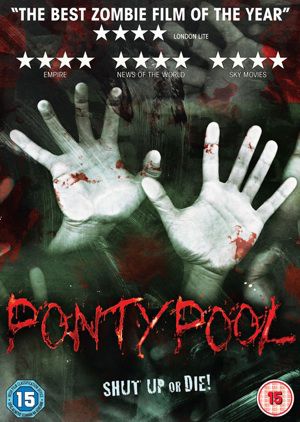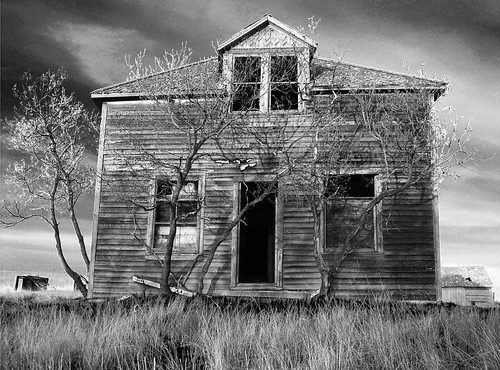There are many ways to scare people, and half of the fun with exploring new horror movies, as I tend to do, is to discover new and exciting things to be scared of. Pontypool adds yet another part of daily life to be scared of, but I'm getting to that. There'll be slight spoilers, but not much that isn't given away on the back of the cover.

While I'm on the topic, let's talk about the cover, shall we? I like this cover. Hands can, although not as wel as faces, express surprising amounts of emotion, and covers that know how to work off that is almost always interesting. Of course, there's a teensy little snake in paradise, the goddamn review blurbs. Of course, I see why people'd want to include this, but come on, think about the aesthetics. Of course, I shop DVDs on the net primarily, and thus I seldom look at covers when I shop for DVDs, but that's me.
So, let's meet the cast, shall we? Our hero is Grant Mazzy, who you might know as the first Nite Owl in Watchmen. Grant's a motormouth radio host who thrives on controversy. Or rather, he was. After being fired, he finds himself doing the morning show in the sleepy village of Pontypool, Ontario, together with his coworkers: The desdignated straight-wonan Sydney and militarily-turned-technican Laurel-Ann. We'll be seeing a good bit of these three, as the entire movie is set in the radio studio. Despite this, there's actually a bit of side-characters, like Ken, the pilot of the so-called Sunshine Chopper.
The idea of setting a disaster-style tale in radio station is actually quite interesting. The limited information input really helps pushing up the tension. Of course, it helps that the disaster is pretty damn original. I'm going to find it a bit difficult to discuss this movie without talking about exactly what's going down, so if you by some divine co-in-ki-dink use this blog as your go-to-blog for horror movies, you might want to skip to my generic recap/opinion at the bottom.
Basically, the disaster that's going on is a 28 Days Later-style Rage Virus that spreads through language rather than blood/air/plot convenience. Some words get «infected» by what I'll just call «The Memetic Killcrazies,» and when you understand this infected word, you'll catch it too. I'll be honest, this concept scares the living crap out of me. Readers of my blog might have caught the general idea that I like words. I like using them, I like reading them, and I consider the multitudes of languages to be one of mankind's greatest achievement. The thought that a mere word can make you a murderous zombie is, putting it bluntly, pretty fucking terrifying.
Then again, zombie isn't quite the word, and that's some of my beef with the reception the movie has gotten. I know I sound like an elitist when saying this, but Pontypool isn't a zombie movie. Sure, those infected with the killcrazies act a lot like zombies, with their empty looks, clawing on windows and in general doing nothing more subtle than using their own body weight to force their way forwards, but they still can't be called zombies. Why? They're still alive.

Allow me to explain. Zombies, here represented by Bub from Day of
The Dead, used to be alive, but isn't any longer, and that's sort of the horror appeal. On the other side, we have the 28 Days-style infected, here represented by Laurel-Ann from Pontypool, who are scary because they are fast and spread quickly. Not really

anything wrong with the latter, and the namesake movie is flat out awesome. My point, though, is that the latter is not a reanimated corpse, and as such not of the zombie subgroup, although they do fill the same niche. It's also worth noticing that some movies, like the awesomesauce that is REC, kind of blur the line between the two, but I'm getting increasingly off-topic, so let's resume.
Pontypool is what I'd call a slightly more cerebral, or psychological horror flick, in that there's not all that many jump scares, and much of the horror comes, as I described, from the flat out terrifying concept of a virus of language combined with the isolation and confusion that comes with a disaster. In a way, it reminds me of the TV-studio in the opening of the original Dawn of the Dead, but the characters feel more sincere. If all of this appeals to you, you might want to check it out. In closing I feel I must mention that Pontypool has one of the better kisses in horror movies I've ever seen, and that should count for something, don't you think?





